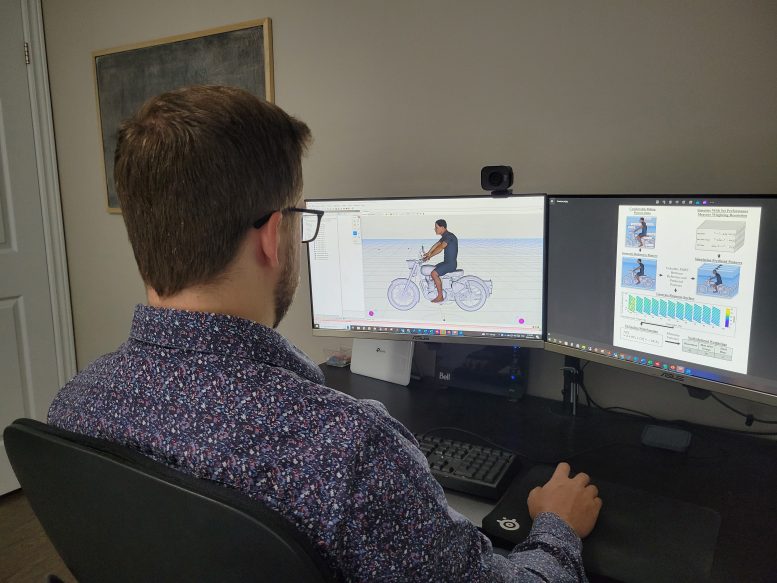
A study from the University of Waterloo utilized digital human models to highlight ergonomic challenges faced by non-average sized motorcycle riders, suggesting that early use of these models in design can enhance safety and comfort while reducing costs.
The research predicts motorcycle riding postures to support ergonomic trade-offs.
Motorcycles are typically built for riders of average height, which can lead to discomfort for those who are taller or shorter.
A new study from the University of Waterloo used software that predicted realistic motorcycle riding behaviors, considering human factors and ergonomic trade-offs. It found that shorter and taller statures require joint adjustments to achieve their preferred riding posture.
Taller riders are required to flex their ankles, knees, hips, and elbows more to interact with the motorcycle properly, and shorter riders have fewer options in possible joint angle configurations, allowing them to reach the seat, handlebars, and foot pegs simultaneously.
Utilizing Digital Human Models
The study was conducted using a digital human model (DHM) — a human representation in the form of an avatar of any weight, size, or sex — in a virtual environment. The tool allows researchers to observe human interactions with components or products such as motorcycles.
“The use of DHMs in early two-wheeled motor vehicle design could help manufacturers improve safety, posture, and comfort, in addition to saving costs,” said Justin Davidson, Biomechanics PhD candidate in Waterloo’s Department of Kinesiology and Health Sciences and co-author of the study.

Justin Davidson, Biomechanics PhD candidate in the University of Waterloo’s Department of Kinesiology and Health Sciences, using a digital human model to analyze the posture of a motorcycle rider. Credit: University of Waterloo
“If a vehicle manufacturer were to consider using DHMs earlier in their design, it could remove some of the earlier trial and error steps. We can change the design and improve it within the computer software before building anything, making it much cheaper in the long run.”
Davidson added that the hope for the future is that companies will improve their designs to accommodate groups that fall outside the average size range, which could be done by studying avatars with various weights, heights, and sexes within the DHM.
The ergonomics of motorcycle riding is a fairly understudied area despite motorcycle riding being an increasingly popular activity around the globe. Davidson suggested that as motorcycle sales increase, motorcycle design companies are trying to find technologies like DHMs to help them gain an edge.
“DHMs aren’t as commonly used as they could be, and their potential for early design intervention could be useful not only when applied to motorcycles but for sitting in a car or even sitting in your office,” Davidson said.
“Part of our goal in this research is to try to move the field forward in a way that people can use DHM tools more confidently so that we can start intervening and making things better for people earlier on, hopefully making people safer and more comfortable.”
Reference: “Predicting preferred motorcycle riding postures to support human factors/ergonomic trade-off analyses within a multi-objective optimisation-based digital human model” by Justin B. Davidson and Dr. Steven L. Fischer, 18 March 2024, Ergonomics.
DOI: 10.1080/00140139.2024.2329694









Bicycles come in sizes, the real answer is for motorcycles to come in sizes.
Ergonomic design and “go-faster” fashionable poses on m/cycles contradict each other. As m/cycle makers desire sales and the market worships speed, then ergonomics goes out of the window. The best move I made on a m/bike many years ago was to get rid of the bike’s go-faster drop handlebars and fit ones that had me sitting up properly and comfortably. It got rid of what was constant back pain.